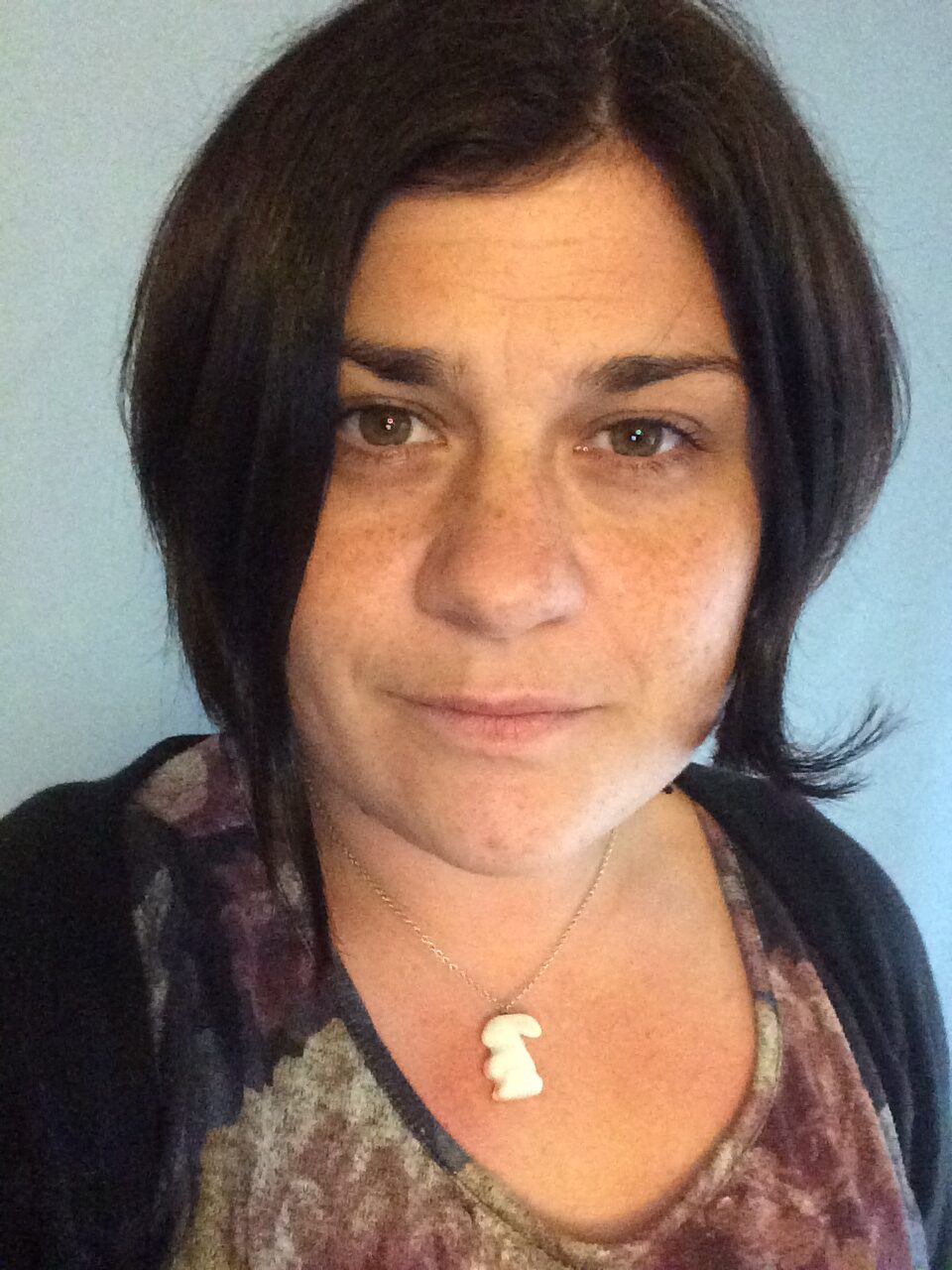From bespoke colours to natural hues, indie dyers across the country are attracting a lot of attention for their unique yarns. But how do these small businesses create their pretty palettes and eye-popping colours ready for you to knit, crochet and stitch with?
We chat to four of our favourite indie dyers from the UK to find out more about them, their love of yarn and how some locally produced wool and a bit of chemistry can create the perfect yarn for your next project.
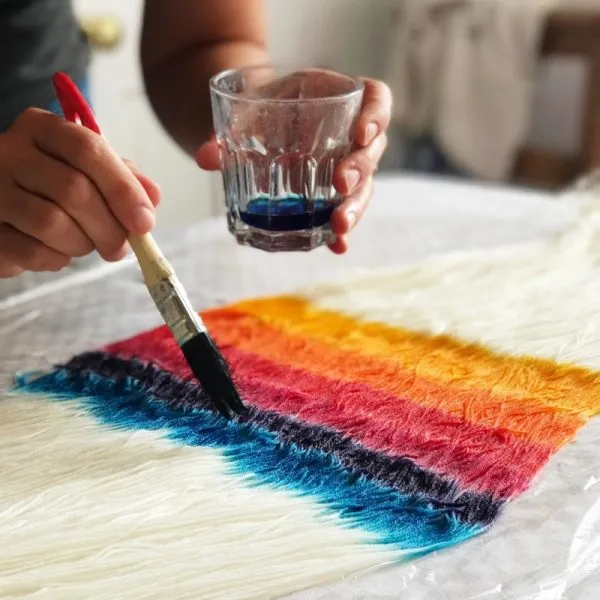
How did you get into dyeing?
Daisy (Devon Sun Yarns): After using hand-dyed yarn for a while, I wanted to try it myself to add another dimension to a handmade jumper I was knitting. Dyeing the exact yarn I wanted, made the project feel extra special and after that, I was hooked!
Lilith (Old Maiden Aunt): I got into dyeing yarn completely by accident. When I moved to Scotland from Canada, I trained as a violin-maker and repairer, but unfortunately, I became ill and that business failed. At the same time, a friend got very into knitting and dragged me into it with her. Knitting quickly became something I could do even on my worst days and still feel productive. I discovered I really enjoyed the process of dyeing yarn and was producing more hand-dyed yarn than I could reasonably use myself, so thought I'd put some photos up on my blog and see what other knitters thought. It all took off from there.
Alicia (Botanical Threads): I was working as a gardener for the National Trust and I came across a small chapter on plant dyeing in a horticulture book I was reading. Working in a beautiful walled garden meant I had access to a huge variety of plants (and vegetables) that I could use to make dyes. I was instantly hooked.
Debbie (Skein Queen): I started dyeing yarn with Kool Aid in my kitchen, having been inspired by a magazine article. A few online searches revealed one or two indie dyers selling their creations on Etsy and I was intrigued by all the colourway names and how the yarn would knit up. I loved the uniqueness of each skein, meaning anything I created from it would be unique too.
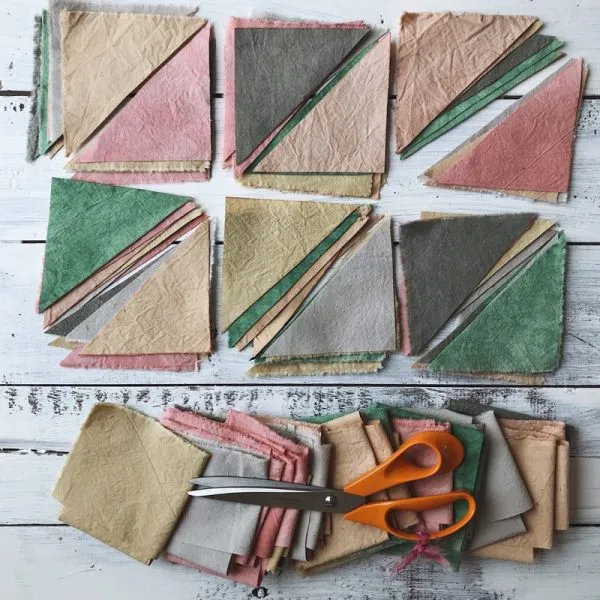
Where do you do your dyeing and what couldn’t you live without?
Daisy: I have a small, light and airy studio in my garden. I used to have a bigger studio that was in a neighbouring town, but I love being closer to home, so I can fit in dyeing around my family. I couldn’t be without my big windows, which are vital for seeing colours and taking photos.
Lilith: I've just moved into a purpose-built home studio at the bottom of my garden, which has been really exciting. It’s a slightly off-kilter L shape, with a dyeing area in one leg and a computer workstation in the other, with shelves of dyed and un-dyed yarn in the middle. The one thing I absolutely couldn't live without is good lighting – essential for colour accuracy, but sometimes hard to find in Scotland in the winter. The two huge full-length windows in the back wall make sure that, even on the greyest days, there's still plenty of natural light coming in. My dog Finn comes into the studio with me to let me know when it's time to take a break, otherwise, I forget to take time for a cuppa!
Alicia: I moved house in the spring, so for now I do my dyeing in the kitchen and my making and sewing in our spare bedroom. Hopefully next year we’ll convert the garage and add some big glass doors so that I can do all of the dyeing and making in the same place, with easy access to the area of my garden where my dye plants grow. My favourite tools are my collection of wooden spoons that I use for stirring and mixing up my dyes. They are a wonderful rainbow of colours from years of absorbing bits of dye.
Debbie: 11 years on and I have a dye works in deepest Berkshire with a team of four people. Half of it is a dyeing studio where all the wet work takes place, the other half is divided into a packing and display area, my office and a drying area. There’s also a mezzanine level where we have industrial winders and storage for the un-dyed yarn. I used to do everything myself for the first seven years in my attic studio in an old barn and was still dyeing from my converted garage. I couldn't live without my team. They keep everything running smoothly, so I'm not working 24/7 any more!
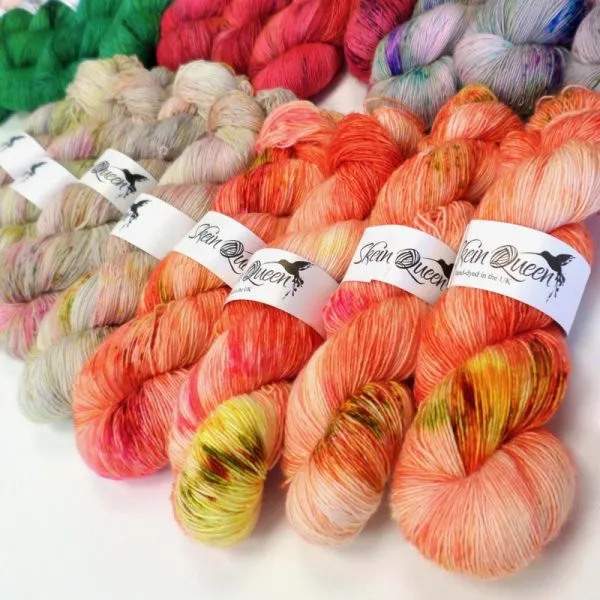
Where do you get your inspiration from?
Daisy: I get the most inspiration from just playing with colours. I love seeing how they blend with each other and react on the different yarns. I love seeing how different shades look on different bases, it’s limitless!
Lilith: The Scottish countryside, lyrics from songs, fairytales and folk stories, a jumper someone in the supermarket is wearing. So many things are just waiting to be translated into colourways.
Alicia: I’m so lucky to live in a beautiful little town in the English countryside. I have access to a huge variety of plants growing in the wild that I can harvest for plant dyeing. I love nothing better than to go for a walk in the different seasons to collect a bag of flowers, leaves or berries to take home and experiment with.
Debbie: I take a lot of inspiration from the Berkshire countryside, the sea and coast, fairy tales and nature. We have a new Birds Collection including colourways such as Puffin and Blue-footed Booby! Books are also a major source of inspiration too. I've run a book/yarn subscription club for many years where customers can read along and try to guess what colours of yarn they will receive in the post. I like to keep it quirky and have had colourway names such as Drunk Bees or Neon Jelly Tots. There are a lot of colourways named after food too!
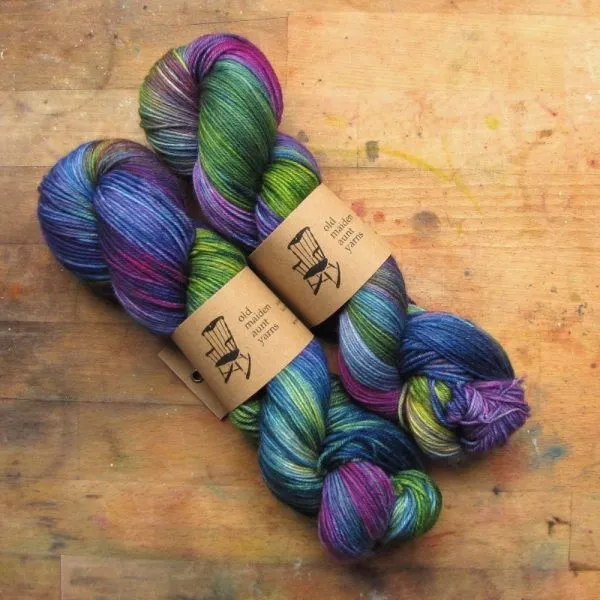
Which indie yarn dyers do you admire?
Daisy: The people who dye yarn with the yarn dyeing kits I sell amazes me every day. They create the most beautiful yarns and often don’t realise how talented they are. I admire anyone who just tries and enjoys it.
Lilith: Countess Ablaze for her take-no-prisoners attitude. I also really love Undercover Otter and her vivid and colourful approach to yarn dyeing.
Alicia: I absolutely love Anna’s work as Gregoria Fibres. Her knitted pieces look like fluffy clouds and her pastel sparkled yarns are gorgeous.
Debbie: Hedgehog Fibres because I love what Beata in Cork, Ireland has done for the industry. Her bright, modern colour palette and her enthusiasm to take indie yarn dyeing to a new level. It’s amazing to see how much Qing Fibre has achieved in the just two years with her unique, rich, artistic colourways. My favourite up-and-coming dyer has to be Bear in Sheep's Clothing. There's something about her colourways on non-superwash British yarns that's a little bit different and recognisable as her style.
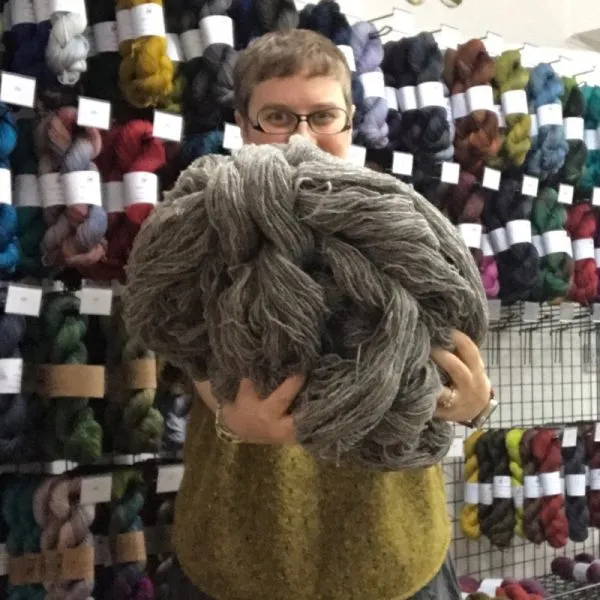
What have been your biggest dyeing wins – and fails?
Lilith: There are a couple of things I've achieved that I'm really proud of. One is definitely my pattern book Coming Home, which came out last year to celebrate ten years of Old Maiden Aunt. As far as my biggest fail, there are dyeing fails all the time, but we mostly just call them 'experiments' and keep trying!
Alicia: My biggest fail has to be recently when I was dying some pomegranate-dyed fabric with iron. The pomegranate fabric was yellow and a small bit of iron turns it green. Unfortunately, I accidentally dropped the whole bag of iron crystals in and the fabric instantly turned black. On the flip side, I spent a few weeks this summer experimenting with madder roots. Eventually, I managed to create the most perfect red.
Debbie: I think the proudest I've felt is getting to grips with wholesale after moving into the new dyeworks. I finally got standard recipes written down after 10 years of resisting and now we wholesale to yarn shops all over the world. There have been lots of little fails along the way. I've left a pot of water overnight and woke up to charred yarn and a very stinky garage. Haven't done that again!
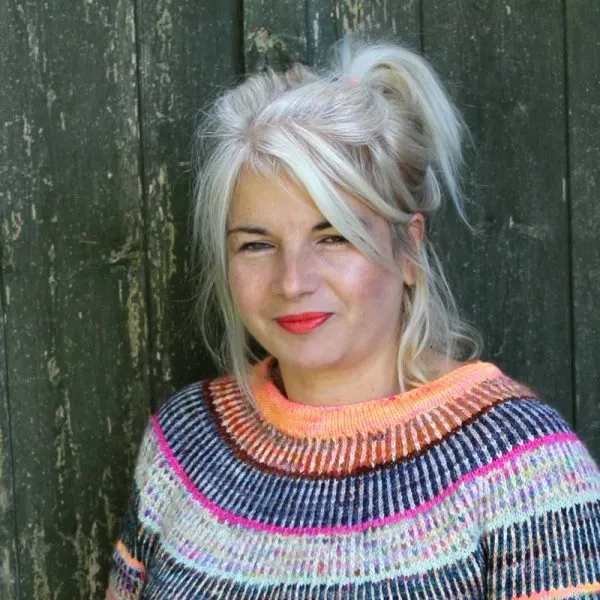
Debbie’s top five yarn dying tips…
- Invest in a good quality yarn. I would recommend Chester Wool Co.
- It's fine to start out with Kool Aid. It already contains citric acid, so you can get good colours easily by simmering in pots of hot water.
- If you move onto acid dyes, research the difference between those that work on animal (protein) fibres and those that work on plant (cellulose) fibres. You may need a different set of dyes depending on which fibre you use. I recommend DT Crafts for buying dyes. You will need different mordants too.
- Use a different set of pots and utensils for your dyeing and your cooking.
- Wear a dust mask when handling dye in powder form.
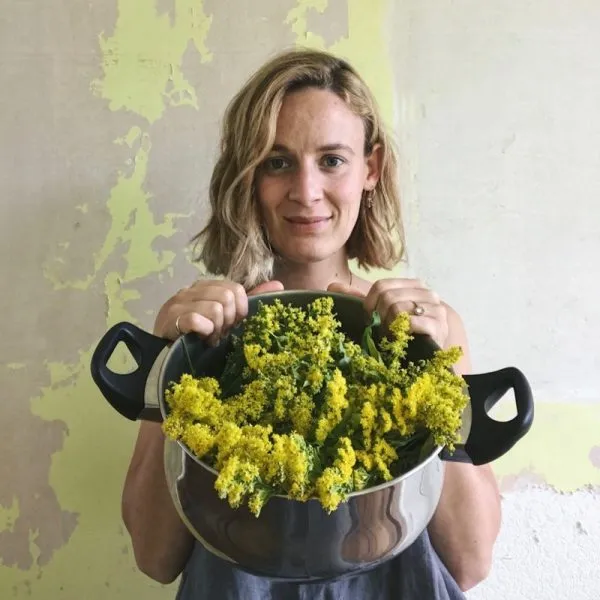
Alicia’s top five natural dying tips…
- Make sure you pre-treat your fabric or the colours won’t work as well. I use soya milk which is the method outlined in all of my ebooks.
- Never let your plants boil when you're extracting the colour as this normally makes the dye turn brown.
- If in doubt, leave your fabric soaking in the dye for longer than you think to absorb more colour.
- Thicker fabrics give better results than thinner ones. There are more fibres per square inch, which results in more intense colours.
- To brighten your colours, use an aluminium pan to extract your dye from the plants and to dye your fabrics.
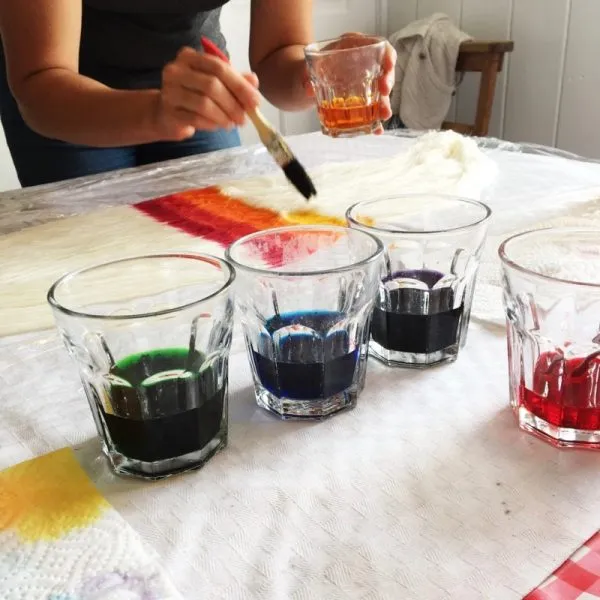
Where to find our indie yarn dyers in the UK
Daisy runs Devon Sun Yarns, an independent yarn shop, which also hosts dying workshops. Visit her Etsy shop www.etsy.com/uk/shop/DevonSunYarns
Lilith is the woman behind Old Maiden Aunt. She's been dying yarn in Scotland since discovering her aptitude for it by accident. Follow her on Instagram or visit her website www.oldmaidenaunt.com
Alicia is the indie yarn dyer behind Botanical Threads, using plants to create her unique colourways on fabric. Follow her on Instagram or visit her website www.botanicalthreads.co.uk
Debbie has been running Skein Queen for 11 years creating stunning colourways from her Berkshire-based workshop. Follow her on Instagram or visit her website www.skeinqueenyarns.co.uk
If you fancy finding some crafts to use your newly dyed yarn, then check out our craft and tutorial sections where we frequently upload must-make DIYs.
First image courtesy of Devon Sun Yarns

